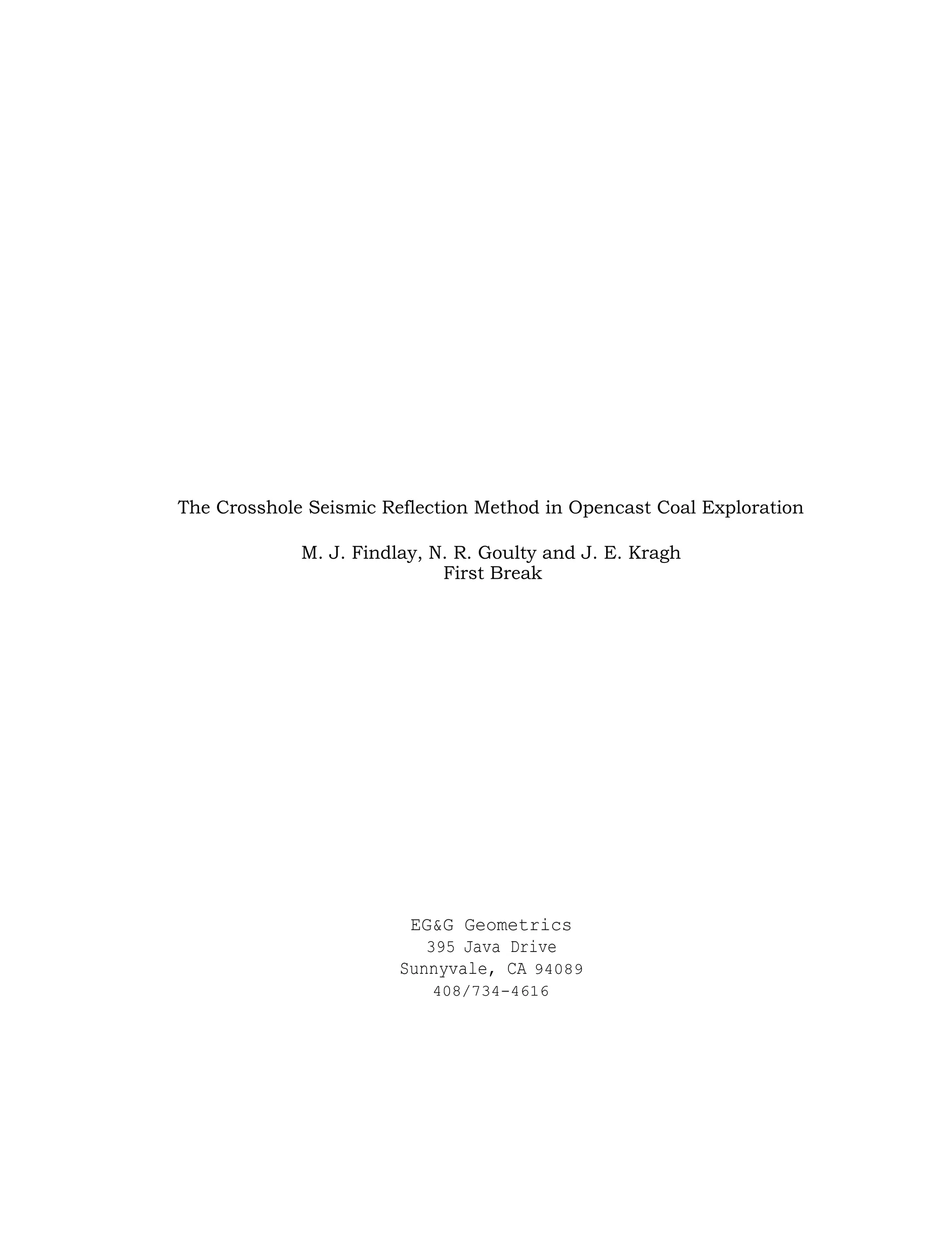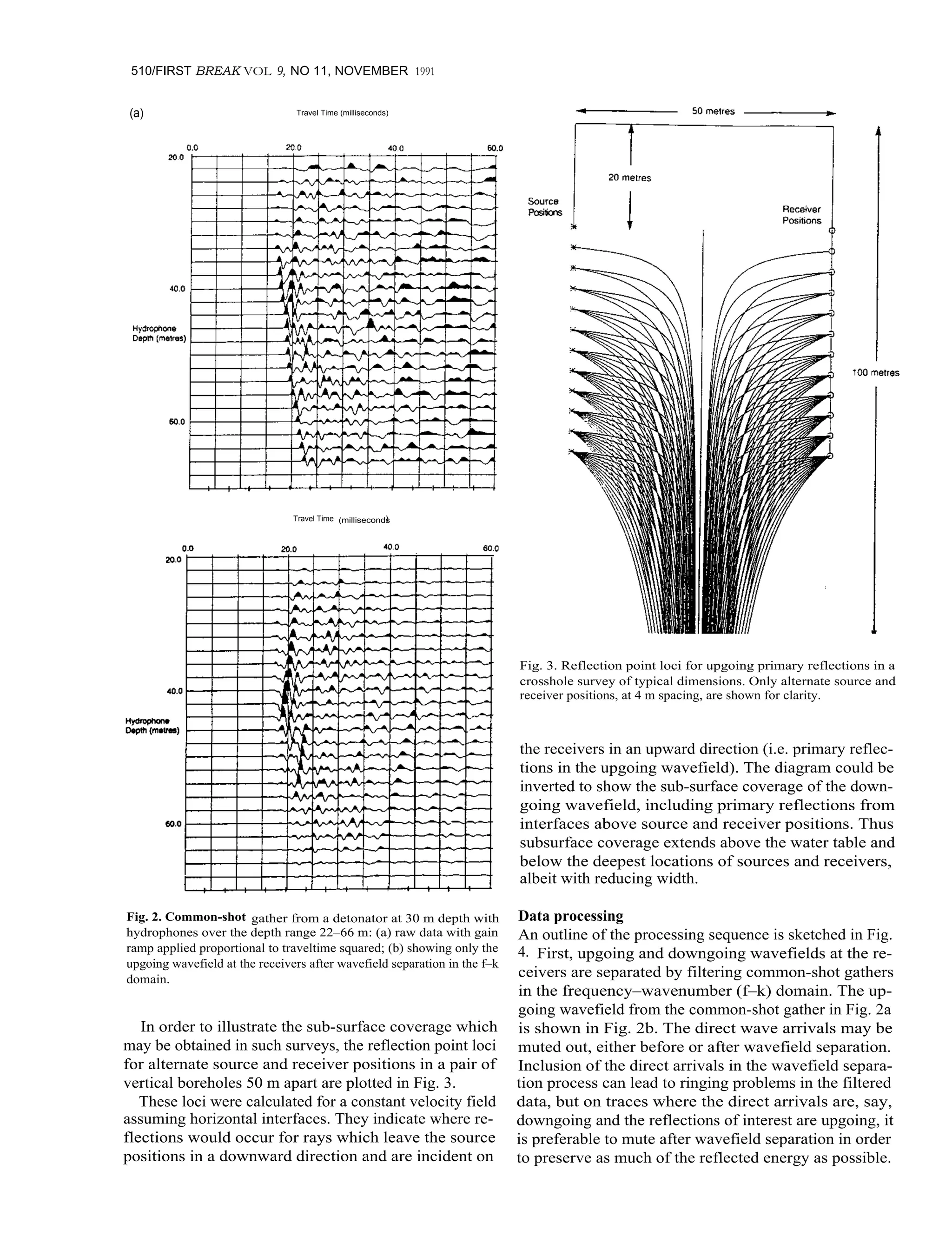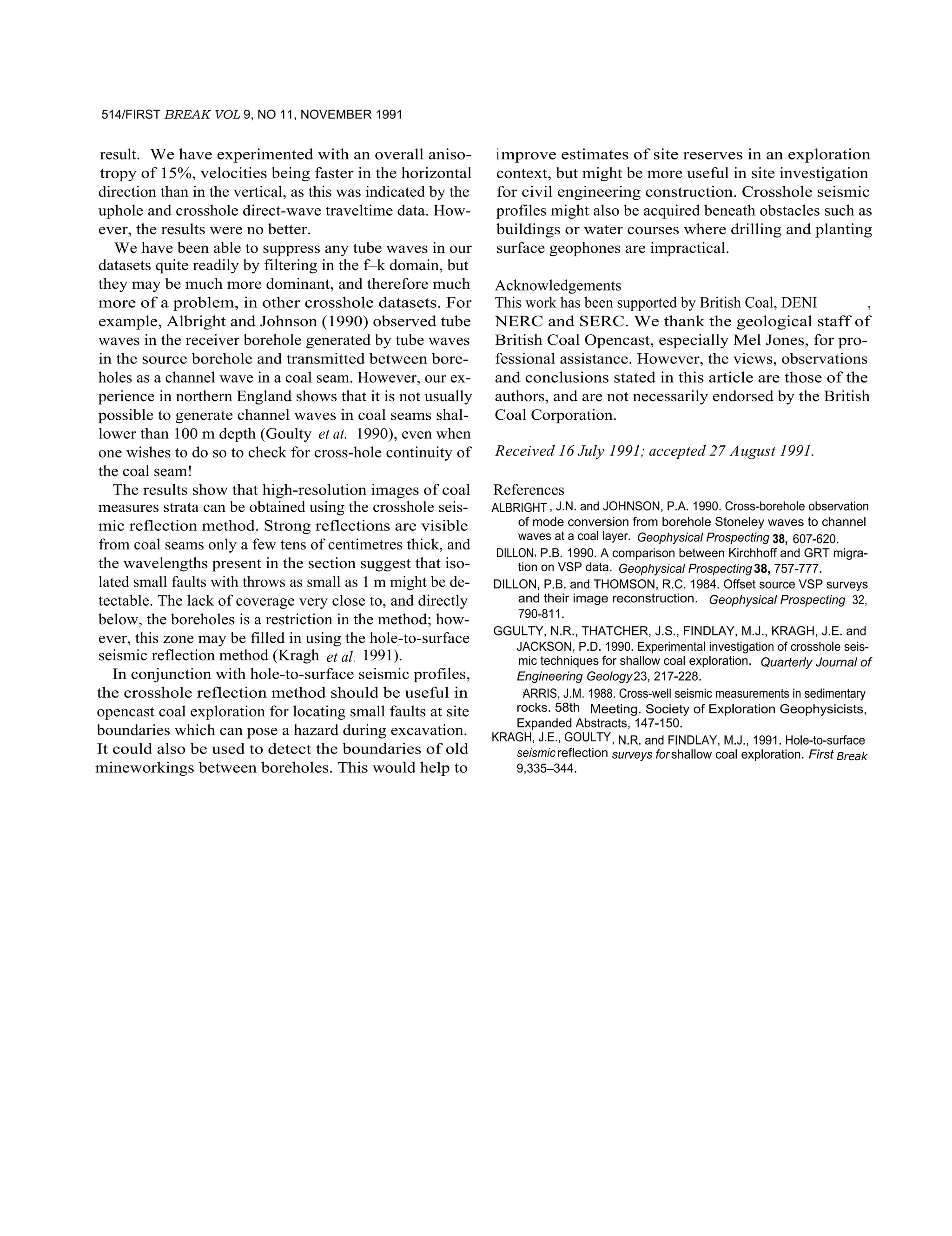The document summarizes research on using crosshole seismic reflection methods for opencast coal exploration. Small explosive charges are used as sources in one borehole, while hydrophones in a nearby borehole record seismic reflections. This provides high-resolution seismic sections between boreholes. Results from two UK coal sites image coal seams and detect small faults not seen with sparser surface exploration methods. While velocity modeling is challenging, the method can locate hazards for excavation and improve reserve estimates compared to traditional borehole spacing.






